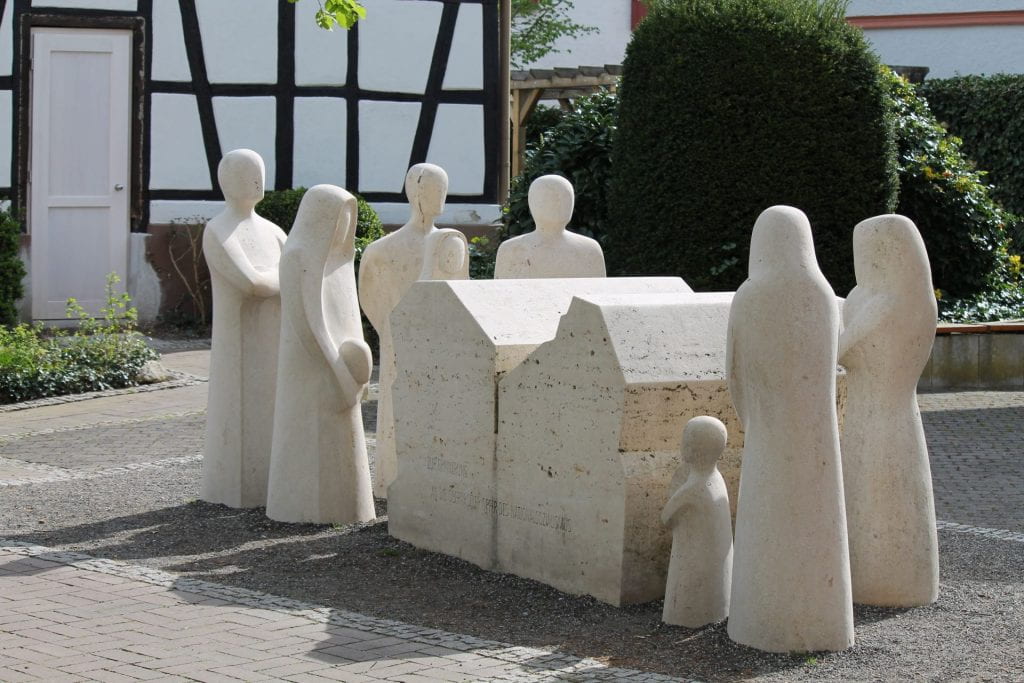
In an effort to remain accountable to communities who have been negatively impacted by past and present medical injustices, the staff at Himmelfarb Library is committed to the work of maintaining an anti-discriminatory practice. We will uplift and highlight diverse stories throughout the year, and not shy away from difficult conversations necessary for health sciences education. To help fulfill this mission, today's blog post explores the ethics of using the results of Nazi experiments during WWII. This post is a follow-up to our International Holocaust Remembrance Day post from January 26, 2022.
It is no secret that during the Holocaust, Nazi’s performed brutal and inhumane experiments on prisoners in concentration camps. These experiments were not only painful, they were often deadly. It was not uncommon for prisoners who had survived these experiments to be put to death afterwards “in order to facilitate postmortem examination” (USHMM, n.d.). However, questions surrounding the ethics of using the data and results of these experiments remain unsettled.
In 1984, Kristine Moe attempted to tackle some of these questions in her seminal article titled Should the Nazi Research Data be Cited? In this article, Moe poses some interesting questions that are still worth considering today:
“If the experiments were conducted in an unethical manner, can the results be considered reliable? If the results are useful, can we afford to ignore them? Does the use of the data imply an endorsement of the methods by which they were gathered, and provide a justification for further unethical research?”
(Moe, 1984)
At the time this article was written, many scientists viewed Nazi data as both useful and “necessary to their work” (Moe, 1984). Take for example Eduard Pernkopf’s Atlas of Topographical and Applied Human Anatomy, sometimes referred to as the “atlas of the Shoah” (Mackinnon, 2020). Nerve surgeon Susan Mackinnon writes about the ethical dilemma she faced upon realizing that the “old but precise textbook” she’d relied on for so long was the product of “a Viennese anatomist who had dissected Hitler’s victims to produce his detailed illustrations'' (Mackinnon, 2020). The accuracy and detail of the images in this textbook were a direct result of the “cadaveric nature of the emaciated bodies, a product of torture and great suffering” (Mackinnon, 2020).
In the late 1980s, Robert Pozos, a physiologist and expert on hypothermia, and Arthur Caplan, a professor of medical ethics, held a conference at the University of Minnesota to discuss if and how to “use hypothermia information gathered at Dachau” (Caplan, 2021). During this conference, some attendees expressed their view that “using immorally acquired information” is justifiable if it is the only way to save a life (Caplan, 2021). Caplan argues that the use of “tainted information” adds legitimacy to this information, thus requiring the need for “good teaching about the horrific history of this information’s creation and careful deliberation about how it is referenced and cited in journals, books, exhibitions, clinical practice guidelines, award presentations, talks, and other sources” (Caplan, 2021).
Some researchers find the Nazi data to be weak, but still use the data to affirm more reliable experimental results. Still others are wholly opposed to the use of this data. Arnold Relman, a former editor of the New England Journal of Medicine, stated that the Nazi experiments were “such a gross violation of human standards that they are not to be trusted at all” (Moe, 1984). Allen Buchanan, a former philosopher at the University of Arizona who reviewed work on human subjects observed that “experiments that are ethically unsound are also scientifically unsound. Very rarely have I seen an experiment that is very good and valuable that had serious ethical problems” (Moe, 1984). This statement makes a strong case against the scientific soundness of Nazi experiments.
A 1990 article entitled Nazi Science: The Dachau Hypothermia Experiments exposed the lack of credibility and scientific vigor of the Nazi experiments. These experiments were found to have been “conducted without an orderly experimental protocol, with inadequate methods and an erratic execution,” and reports were “riddled with inconsistencies” (Berger, 1990). Additionally, there was evidence of data falsification and fabrication (Berger, 1990). Berger makes a strong case for abandoning future citations of Nazi data based on “scientific grounds” (Berger, 1990).
Others find the issue to be more nuanced. Caplan argued that “tainted” information could be used “if, at the same time, non-maleficence can be achieved and the physician acknowledges and discloses the immoral origins of the work, in a manner that honors the victims but not its perpetrators” (Mackinnon, 2020). Mackinnon presented a four-step framework to consider when use of the Pernkopf Atlas is deemed to be potentially helpful. This framework includes taking a timeout to reassess planning, consult a colleague for help, and consult other educational resources or textbooks. As a last resort, the atlas can be consulted, but only if it is done with “disclosure, respect, gratitude, and solemnity” (Mackinnon, 2020).
The dialog around this issue is an important one. The topic has experienced a resurgence in recent years and discussion of the topic has been renewed. Mackinnon eloquently states that “as physicians and educators, we have an enduring moral duty to recount history, share knowledge with generations that follow, and protect against new versions of the atrocities of the past” (Mackinnon, 2020).
References:
Berger, R. L. (1990). Nazi science: The Dachau hypothermia experiments. New England Journal of Medicine, 322(20), 1435-1440. Retrieved from https://proxygw.wrlc.org/login?url=https://www.nejm.org/doi/full/10.1056/NEJM199005173222006
Caplan. (2021). How Should We Regard Information Gathered in Nazi Experiments? AMA Journal of Ethics, 23(1), E55–E58. https://doi.org/10.1001/amajethics.2021.55 Retrieved from https://proxygw.wrlc.org/login?url=https://journalofethics.ama-assn.org/article/how-should-we-regard-information-gathered-nazi-experiments/2021-01
Mackinnon S. (2020). When medical information comes from Nazi atrocities. BMJ (Clinical research ed.), 368, l7075. https://doi.org/10.1136/bmj.l7075 Retrieved from https://proxygw.wrlc.org/login?url=https://www.bmj.com/content/368/bmj.l7075
Moe, K. (1984). Should the Nazi Research Data Be Cited? The Hastings Center Report, 14(6), 5–7. https://doi.org/10.2307/3561733 Retrieved from https://proxygw.wrlc.org/login?url=https://www.jstor.org/stable/3561733
United States Holocaust Memorial Museum. (n.d.) United States Holocaust Memorial Museum Website. https://www.ushmm.org/


